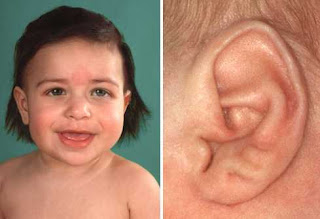What is the diagnosis 2?
A 41-year-old man presents to the emergency department (ED) complaining of a severe frontal headache that began suddenly and awakened him from sleep. The headache is associated with nausea, vomiting, and subjective fevers. He also complains of new-onset diplopia and photophobia, but denies any decrease in visual acuity. He denies experiencing any associated seizures, focal weaknesses, previous similar episodes, frequent headaches, or previous visual disturbances. He does not have any prior significant medical problems, and his only medication is occasional sildenafil. He drinks socially, does not smoke, and denies recreational drug use.
On physical examination, the patient is ill-appearing but alert and in no apparent distress. His vital signs reveal a temperature of 103.1°F (39.5°C), a blood pressure of 155/95 mm Hg, and a pulse of 110 bpm. The ocular examination demonstrates ptosis of the right eye (see Figure 1), which is deviated inferolaterally and has a dilated and unreactive pupil (see Figure 2). The visual field examination demonstrates bitemporal hemianopsia. Funduscopic examination shows normal venous pulsation and mild bilateral temporal disc pallor. The cranial nerves are otherwise without deficit. The neck is supple and without meningismus. Examination of the chest reveals mild bilateral gynecomastia, without nipple discharge. The lungs are clear to auscultation. Cardiac auscultation reveals a normal S1 and S2 and no murmurs, rubs, or gallops. The abdomen is soft and nontender, and no organomegaly is detected. Bilateral upper and lower extremity strength is 5/5, with normal deep tendon and plantar reflexes. The patient's sensation is intact to light touch and pinprick throughout, and the gait is normal.
Laboratory investigations reveal a hemoglobin concentration of 13 g/dL (130 g/L); a white blood cell (WBC) count of 16.0 × 103/µL (16.0 × 109/L), with 75% neutrophils; and a platelet count of 340 × 103/µL (340 × 109/L). The electrolyte, blood urea nitrogen (BUN), creatinine, and glucose examinations are all within normal limits. Cerebrospinal fluid (CSF) specimens show 420,000 red blood ceels (RBC)/μL, 20,000 WBC/μL, a normal glucose of 85 mg/dL (4.72 mmol/L), and an elevated protein concentration of 230 mg/dL (2.3 g/L). The CSF Gram stain is negative for bacteria. A computed tomography (CT) scan of the brain is performed, followed immediately by magnetic resonance imaging (MRI; see Figure 3).


Comentarios
Publicar un comentario